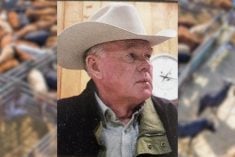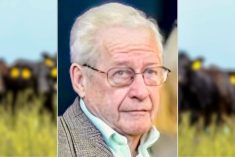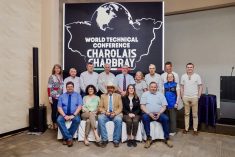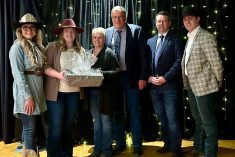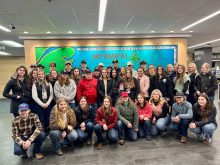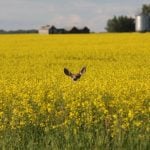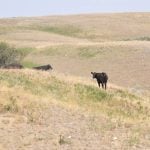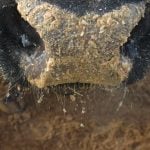By Dianne Finstad as told by Dale Boulton, Ray Depalme and Joe Drisdale
As Salers breeders celebrate a half-century of the cattle in Canada, it’s a good time to reflect on how it all began and some of the people who were leaders in building a legacy.
The early 1970s were heady days for “exotic” cattle in Canada, with imports of many breeds expanding the range of cattle character in the country. The first Salers bull exported from France to North America was Vaillant, standing at the Rimouski, Quebec AI unit where Adrian Demoustier had brought him. As the Salers Report of 1975 indicates, the Quebec firm that imported the bull sent J.J. (Bud) Prosser in 1971 to study the French beef industry in search of an ideal bull for cross-breeding with Canadian stock. The number one selection priority was the ability to sire calves that give the least possible amount of calving difficulties. The breed Prosser selected was Salers, which were dual-purpose dairy and beef cattle from the mountainous area of Salers, France, known for their hardiness.
Read Also
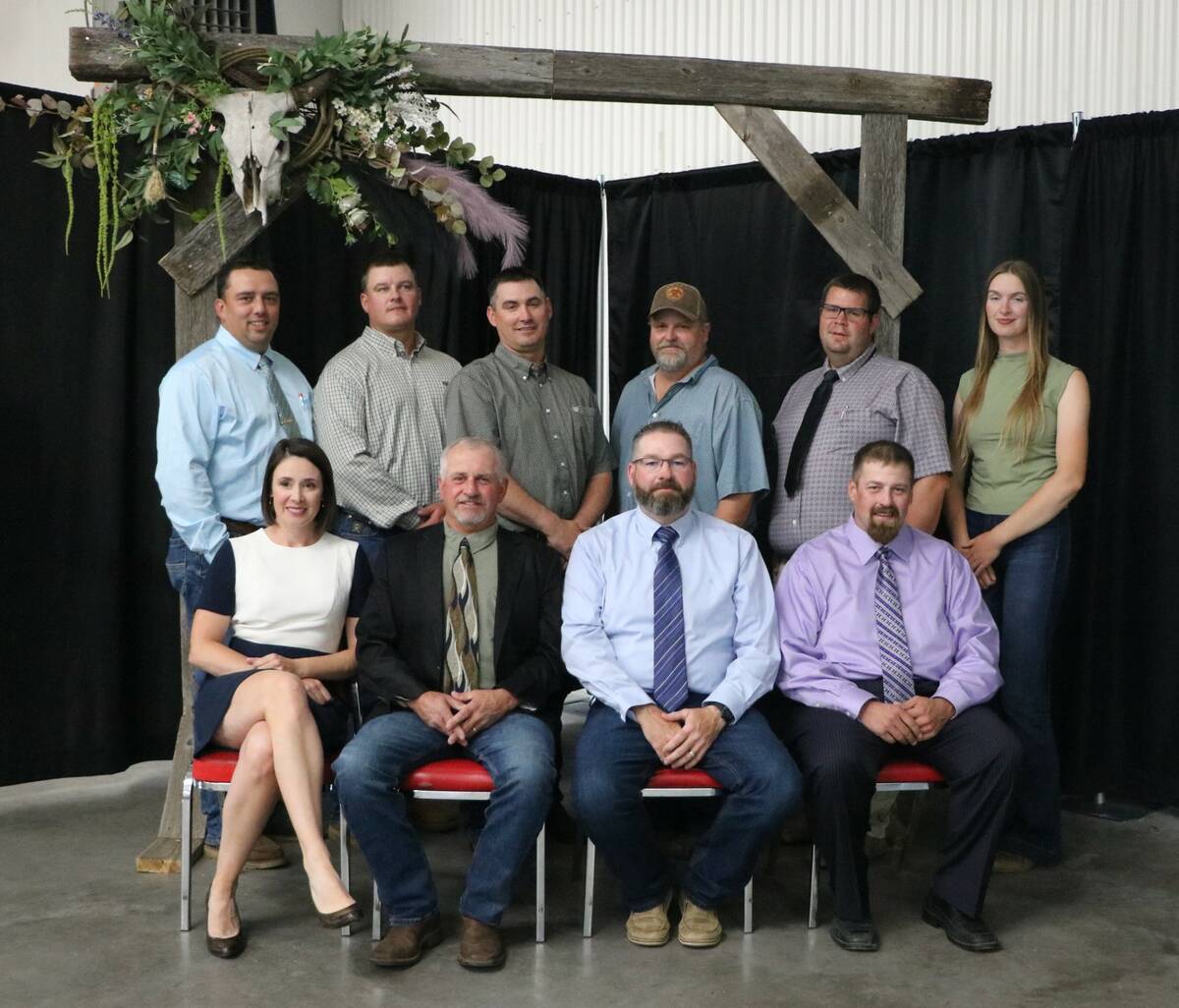
Purely Purebred: Outstanding Young Angus Breeder, Junior Limousin Herd Building Incentive winners and more
News from Canada’s purebred beef industry, including show results, board election results, research and more
One of those in the middle of the exotic cattle boom was Rudy Enzmann, an auctioneer and sales manager who was impressed with Vaillant. He was quick to line up some Calgary business people to form a syndicate to purchase the bull, including Ten Star breeders, Marquis Properties and Relco Livestock Consultants. Vaillant was shipped to his new home in Calgary in 1973. By 1974, Enzmann and his Relco firm had managed three Salers sales in Alberta, selling 79 half-blood open heifer calves, averaging just under $3,000 each.
Meantime, the Salers Association of Canada was formed in 1973, with Ron Liesemer as the group’s first president. John Moore, with his legal expertise, drafted the bylaws of the organization. Dale Boulton became the first executive secretary in 1974, working out of an office in the Calgary Stockyards. Beginning with the full-blood Vaillant bull, there were 212 Vaillant calves, registered as half-bloods, and thus the process of adding Salers blood and building the percentages began. Vaillant went on to have 2,265 progeny in the Salers registry. Two more bulls were brought in from France shortly afterwards — Imperial, imported by the Pincher Creek Ranch, and Ivanohe by Phil Tetrault — and semen sales were soon booming.
By 1975, the association held its second annual sale, a high-profile event complete with cattle actually inside the Calgary Inn Ballroom. An imported full-blood bull, Big Jim, from Temp Management of Calgary and Billings, sold to Stuart Robertson and the Turner Valley Ranch for $100,000. They also purchased the high-selling female, an imported full blood, for $60,500. Excitement was building about the potential for this next exotic to make a mark on the livestock industry in Canada.
A key piece of the breed’s growth came from a 1975 trip for Canadian breeders and two press people — Harold Dodd of Canadian Cattlemen and Randy Mader of Focus on Beef — to Salers, France. Boulton organized the trip with Antoine Bonal, executive secretary of the French Herd Book for Salers, and French cattle promoter Jean Beaurenault. Seeing the animals in their natural environment and at the largest Salers show in the world served to make many in the group even more committed to building the breed in Canada, plus the press stories helped create awareness in the livestock industry about Salers.
“The cattle came down to the show in the morning, and you could hear their cow bells ringing as they trailed them in,” recalled Boulton.
The trip was followed by a significant importation of cattle, with 83 Salers from France entering Canada in 1976. Importing live cattle from Europe was not for the faint of heart or pocketbook. The animals had to be quarantined in France before being shipped to Canada, where they had to spend another three months in quarantine at Saint-Pierre and Miquelon (a French territory) before heading to their new homes, where they could have contact with no other cattle for another three months.
The Ten Star breeder group active in the formative years included the likes of Eric Proppe, Jim Haldane and Phil Tetrault. Their enthusiasm for the breed (and Tetrault’s great marketing abilities) soon attracted others, including Joe Drisdale, Dale Boulton and Ray Depalme. The trio of early Salers players recently got together to reminisce about early days and people.
Drisdale was a businessman in the catering industry. Naturally, he knew restauranteur Phil Tetrault, of the famous Phil’s Steak and Pancake House. Drisdale’s wife, Eleanore, was raised on a farm and loved cattle. They became early investors in Salers cattle for their place at Okotoks and prominent breeders with Drisdale’s Hidden Valley Ranch. Drisdale bought some local percentage cows but then imported full-blood cows and a bull from France called Lascar. Another bull that established his presence in the breed was Major.
Dale Boulton worked for Charolais breeder Sam Hector, who was Enzmann’s neighbour. There he helped calve out 800 head of seven different breeds, and the idea of an easy-calving, low-maintenance type of cattle appealed to him. When he was offered the opportunity to manage the new association, he jumped at it. Boulton helped Jim Hall of Montana set up the American Salers Association, too. But after three years of watching others cash in on Salers cattle, Boulton and his wife Lorraine decided to launch their own herd, so he left the office, and Alex McTaggart became his successor. The Boultons started Saddle Mountain Salers in partnership with Eric Proppe, raising Salers-based cattle until health challenges forced him to slow down and let them go.
Ray Depalme fed out some feedlot cattle on the Red Deer farm with his father, but when his wife Doreen’s uncle, Jim Haldane, told him about Salers, he was intrigued. One meeting with Phil Tetrault (plus the look of the cattle) was enough to convince him the time to act was now. He was able to get a group of 20 half-blood heifers from Norman Lee of Lundbreck, Alta., to help him launch into the breed full force, aided by the eventual importation of the bull Louis XIV. He was involved in the leadership of Salers’ organizations in various capacities over the years, and remains an active breeder, with his son Travis, and their Sky West Salers.
There were other significant breed builders of the early years, such as Stuart Robertson, Dick Kimmell, and Fred Foxwell, to name just a few. It was Gerry Dixon who started the publication Salers — The Balanced Breed in 1976, which became Salers Country as McTaggert took on being editor.
Breed shows were in their heyday and served as a great venue for breeders to promote their bloodlines as well as Salers cattle. Bull test station feeding trials at Ellerslie and Montana were another marketing tool, especially for commercial buyers.
But it’s hard to underestimate the marketing push for Salers from Tetrault.
“Phil was gung-ho and he had plans,” recalled Depalme.
He would share several pages of marketing philosophy in the publications, and one article said, “He wants to see the Salers breed achieve what he believes is their well-deserved, immense promise as a major cattle breed in North America.” To achieve that, he had a feasibility study and a complete marketing plan to prove the Salers female a superior mother, and to bring buyers and sellers of progeny together. Such a focus brought business people and cattle people to the Salers breed, who may never have met any other way.
The vision of those first folks to get behind Salers cattle enabled the breed to earn its stripes in the Canadian cattle industry, and a statement from early marketing materials holds just as true today for “the Balanced Breed”: “We think the combination of a calf per cow per year and a uniform calf crop from birth to market makes dollars, as well as sense.”
The memories of those times are treasured, especially by Depalme, Boulton and Drisdale.
“It never leaves you. Those were good years,” summed up Drisdale.



